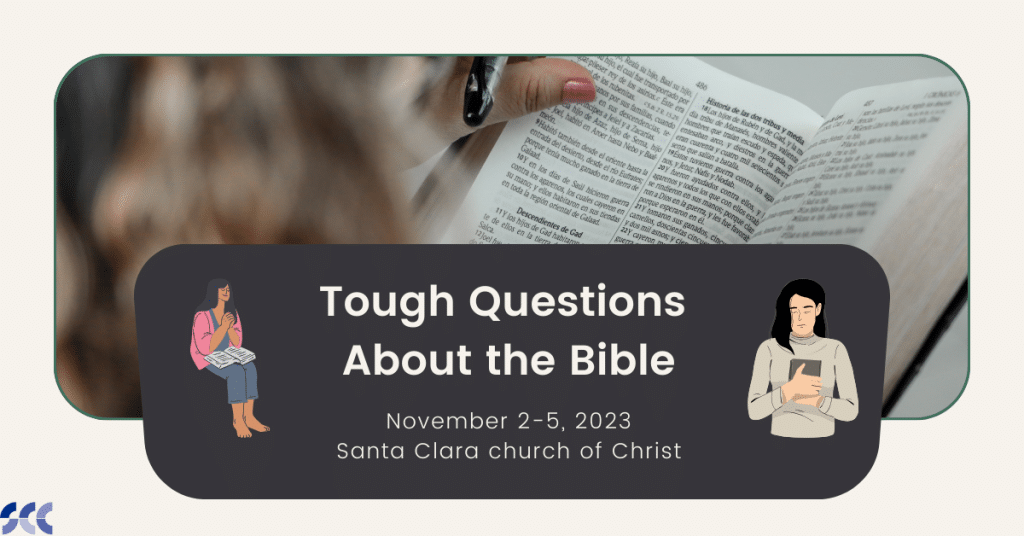The word “Bible” comes from biblia, “books” in Latin and Greek. It was God’s intention from the beginning to bequeath a “Book of books” to the world.
As human civilization developed, so did the process of writing and components of book manufacture, making the very idea of God-given Book possible.
Language and Writing
The written recording of human language first took shape in the form of pictures. Eventually these pictorial representations grew more complex and standardized, as in Sumerian cuneiform script or Egyptian hieroglyphs.
Finally, the pictures were reduced to alphabetic symbols, in which more complex combinations of written communication could occur. One scholar, Douglas Petrovich, has recently argued that the earliest known alphabet was in fact an early version of the Hebrew language.

Book Formats in the Ancient World
Book technology is changing fast.
Even though hardcopy book sales still outpace e-books, many brick and mortar bookstores are going extinct. E-Books are interactive, with audio and video links built into them.
In ancient times, written communication took shape as inscriptions on monuments, ostraca (broken pots), and various other materials seen as museum artifacts today. A person’s personal identification was impressed from pictographs of a seal onto clay.
Depending on the period and region, people wrote on papyrus, clay, wood, parchment (leather), or wax tablets. During much of Biblical history, we should think of a “scroll” when we read the term “book” (cf. Rev. 5).
Eventually, the Roman world gave birth to the codex, which was a precursor to the modern book. Several folded sheets of parchment or vellum (high quality calf skin) would be folded together and bound on one end, with a thicker cover encasing the contents.
Early Christians preferred the codex to the scroll. One reason was the compact user-friendliness of it. The Gospel of Luke would take up about 31 feet of scroll – cumbersome and impractical – but all four Gospels could fit into a codex.
On the other hand, there was a high cost involved. Producing a “manuscript” (literally something that is “hand-written”) is labor intensive. Moreover, the average calfskin produced only three-and-a-half medium-sized sheets of writing material, so a lot of animals have to be slaughtered to produce a full-size book.

The “Canon” of Holy Scripture
How do we know the 66 books of the Bible belong in the sacred text as part of “God’s Book,” and that they are the only writings that should be included? What about the Apocrypha or the Gnostic Gospels?
You may have seen an ad peddling the “Secret Teachings of Jesus” or the “Lost Books of the Bible.”
The answer lies in the canon, a word derived from Greek which means “rod” or “rule.” As applied to the books of the Bible, it means the rule or standard applied to the writings which are recognized as Holy Scripture.
Many discussions in the early centuries of the church were devoted to this topic, especially in an environment in which heretics accepted certain uninspired books or rejected certain genuine ones. For example, Marcion (c. AD 110-160) accepted only the epistles of Paul.
The Gnostics, on the other hand, had their own writings such as the so-called Gospel of Thomas, the Gospel of Mary Magdalene, and the Gospel of Judas.
Looking Backward – Criteria for Inclusion
It is important to realize that the early church did not determine which books were inspired and which were not. The main issue was recognizing what God had already determined when He revealed his truth through chosen men.
Formal sanction in later centuries simply acknowledged writings that were long since widely accepted in the churches. Athanasius in AD 367, Jerome’s Latin Vulgate (c. AD 385), and the councils at Hippo (AD 393) and Carthage (AD 397) all recognized the same 27 books that are found in our present New Testament.
The discussions of later years focused on five criteria:
- Apostolic? Was it written by or in connection with an apostle? For example, Mark was closely associated with Peter, and Luke with Paul.
- Consistent with Known Revelation? Did it conform to apostolic teaching, or did it promote a heretical doctrine? (Gal. 1:8-9)
- First Century or Older? Was it written in the New Testament period? The Shepherd of Hermas was a popular book among Christians in the second and third centuries, but it was written in the middle of the second century, in the post-apostolic age, and therefore excluded. The assumption was that the faith was “once for all delivered to the saints” (Jude 3), and, once delivered, fully complete (2 Tim. 3:16-17; 2 Pet. 1:3).
- Universally Received? Was it widely acknowledged by the church at large, or was it only a “local” favorite? (The term often used for this criterion is “catholic” = “universal”)
- Truly “God-breathed”? The bottom line, even if an apostle did not write it: was it given under the direction of the Holy Spirit as part of inspired Scripture?
It should be mentioned that Christians in the late-first and second centuries were already on record with discussions of the background of various books. Clement, Ignatius, Papias, Irenaeus and other “church fathers” weighed in on the subject.
The Muratorian Fragment (c. AD 170) is perhaps the oldest known list of New Testament books (and the text is available online). It corresponds fairly closely to our present list, with a few minor variations, and represents a time when the canon was not quite universally fixed.
The process of collecting a few of the books was evidently still going on in some places, and there were questions raised about a few books. Even still, it bears a striking resemblance to a modern listing of New Testament books.
Looking Forward – Putting the Books into One Collection
Most discussions of the canon view the issue in hindsight, looking back at the apostolic age from the time of later councils.
Perhaps instead we should look from the Biblical period forward, since there are clues in the Bible itself regarding how God’s Word should be put together (Isaiah 8:16; Jer. 36:32; et al.).
Again, there are five tests which give “advance notice” about inspired writings.
- Was it written by a prophet of God? I.e., is it genuinely inspired? (Deut. 18:18; 2 Pet. 1:20-21). For N.T. documents, do they bear apostolic authority? (Heb. 1:1-2)
- Was he confirmed by an act of God? Moses used his rod to display the “finger of God” (Ex. 8:19). Elisha performed miracles (2 Kings 5:8). Jeremiah uttered both short-term and long-term predictive prophecies which were fulfilled in stunning detail (cf. Jer. 28). Jesus performed indisputable “signs” (John 20:30-31). The apostles’ message was “confirmed” by miracles (Heb. 2:3-4). False prophets were unable to compete (Deut. 18:22). Remember also that for N.T. period prophecies, there was also the spiritual gift of “discerning of spirits” (1 Cor. 12:10; 1 Thess. 5:19-21).
- Does his message harmonize with prior revelations of God? A new revelation builds on and is an extension of prior revelations. It may contain some new information, but it cannot contradict legitimate revelations in the past (Gal. 1:8). Even if a false prophet seemed to meet criterion #2, he would fail this one and must be rejected (Deut. 13:1-5).
- Does it have the power of God? Anyone familiar with the Apocryphal Gospels is able to sense the overwhelming difference between them and the four canonical Gospels (John 7:17). The counterfeit is vastly inferior to the real thing. For example the Gospel of Thomas says, “Simon Peter said to them, ‘Make Mary leave us, for females don’t deserve life.’ Jesus said, ‘Look, I will guide her to make her male, so that she too may become a living spirit resembling you males. For every female who makes herself male will enter the kingdom of Heaven.’” (114) The Infancy Gospel of Thomas mentions a childhood incident in which Jesus strikes a Pharisee dead for emptying his pool of water
(3). There is a sense of dignity, reserve, trustworthiness and power in the genuine Word that is missing from the pretenders (Heb. 4:12). - Was it accepted by the people of God? Throughout the history of divine revelation, measures have been taken by God to insure that the original recipients of his message recognize it as such and circulate it accordingly (as outlined in lesson 4).
- It should be recognized as “the Word of God” (1 Thess. 2:13), which means…
- Instructions are given for perpetuation “markers” and repository (Deut. 31:24-26; Josh. 24:26-27; 1 Sam. 10:25).
- Biblical writers formally recognize other inspired writers (Dan. 9:2; 2 Pet. 3:16; 1 Tim. 5:8).
- The people of God were to publish and circulate legitimate written revelations (Col. 4:16; 1 Thess. 5:27; 2 Thess. 2:2; 3:17; Eph. 6:21-22).
The bottom line in all of this is that there are no “lost books” of the Bible. Certain works were
rejected as apocryphal (“hidden away”) or pseudipigraphal (falsely attributed to someone
noteworthy).
As the councils of Hippo and Carthage both concluded, “And further it was resolved that nothing should be read in church under the name of the divine scriptures except the canonical writings. The canonical writings, then, are these….” A list of our present New Testament books follows.



